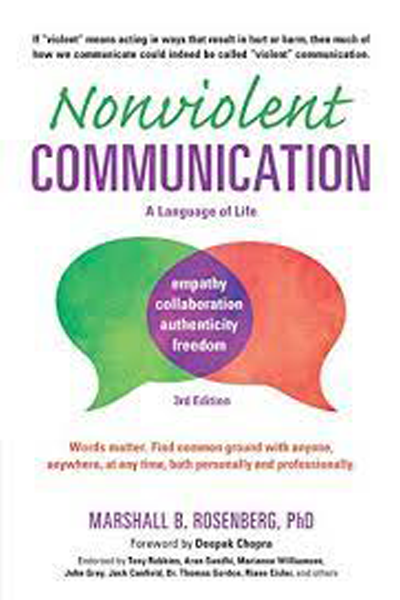
In “Nonviolent Communication: A Language of Life,” Marshall B. Rosenberg presents a profound approach to communication that transcends conflict and fosters understanding, empathy, and connection. Through his compassionate and insightful teachings, Rosenberg unveils the power of empathetic listening, honest expression, and conflict resolution rooted in empathy and mutual respect.
At the heart of the book lies the concept of nonviolent communication (NVC), a transformative framework that emphasizes the importance of identifying and expressing feelings and needs with clarity and empathy. By cultivating awareness of our own feelings and needs, as well as those of others, NVC enables individuals to communicate authentically and compassionately, thereby nurturing deeper connections and fostering harmonious relationships.
Rosenberg’s emphasis on empathy and understanding makes “Nonviolent Communication” particularly relevant and beneficial for inmates and the prison population. In correctional facilities, where tensions often run high and conflicts are commonplace, the principles of NVC offer a powerful tool for de-escalating conflicts, resolving disputes, and promoting a culture of empathy and cooperation among inmates and staff alike.
By teaching inmates to recognize and articulate their own feelings and needs, as well as empathize with the feelings and needs of others, NVC empowers them to navigate interpersonal conflicts peacefully and constructively. This not only reduces the prevalence of violence and aggression within prisons but also cultivates a sense of accountability, responsibility, and self-awareness among inmates.
Furthermore, the practice of NVC encourages inmates to develop essential life skills such as emotional intelligence, empathy, and effective communication, which are invaluable for their successful reintegration into society upon release. By equipping inmates with the tools to communicate nonviolently and resolve conflicts constructively, “Nonviolent Communication” contributes to reducing recidivism rates and promoting rehabilitation and healing within the criminal justice system.
In essence, “Nonviolent Communication: A Language of Life” is not just a book; it is a transformative guide that has the potential to revolutionize communication and relationships both within and beyond the confines of prison walls. Through its profound teachings and practical strategies, it offers a beacon of hope for inmates seeking redemption, healing, and connection in a world too often characterized by conflict and division.







